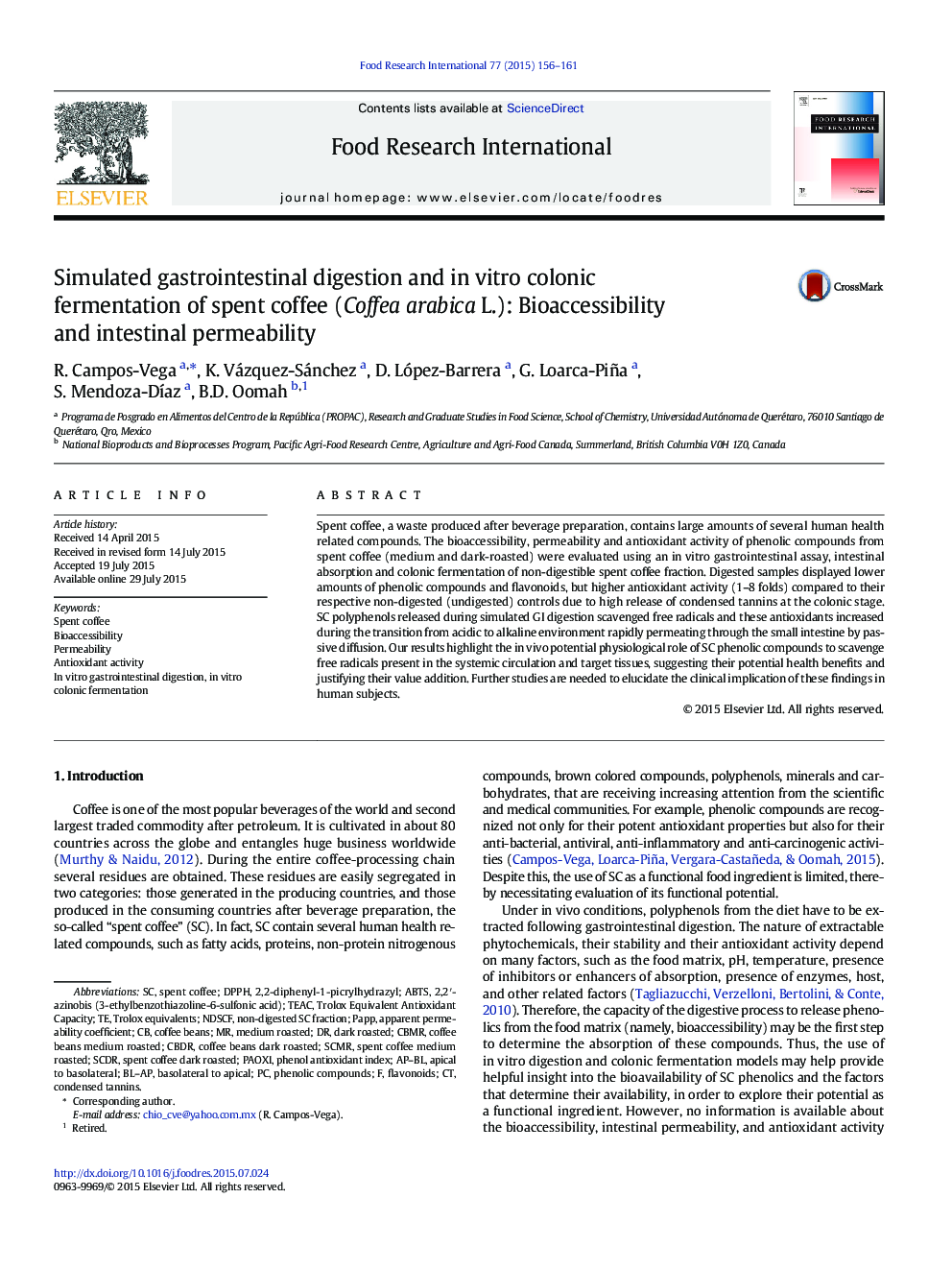| Article ID | Journal | Published Year | Pages | File Type |
|---|---|---|---|---|
| 6395079 | Food Research International | 2015 | 6 Pages |
â¢Spent coffee is a source of natural antioxidant due to its high content in phenolics.â¢The use of spent coffee as a functional food ingredient is limited.â¢Polyphenols are bioaccessibly during simulated gastrointestinal digestion.â¢Spent coffee is metabolized during simulated colonic fermentation.â¢Their permeability and antioxidant activity suggest their potential health benefits.
Spent coffee, a waste produced after beverage preparation, contains large amounts of several human health related compounds. The bioaccessibility, permeability and antioxidant activity of phenolic compounds from spent coffee (medium and dark-roasted) were evaluated using an in vitro gastrointestinal assay, intestinal absorption and colonic fermentation of non-digestible spent coffee fraction. Digested samples displayed lower amounts of phenolic compounds and flavonoids, but higher antioxidant activity (1-8 folds) compared to their respective non-digested (undigested) controls due to high release of condensed tannins at the colonic stage. SC polyphenols released during simulated GI digestion scavenged free radicals and these antioxidants increased during the transition from acidic to alkaline environment rapidly permeating through the small intestine by passive diffusion. Our results highlight the in vivo potential physiological role of SC phenolic compounds to scavenge free radicals present in the systemic circulation and target tissues, suggesting their potential health benefits and justifying their value addition. Further studies are needed to elucidate the clinical implication of these findings in human subjects.
